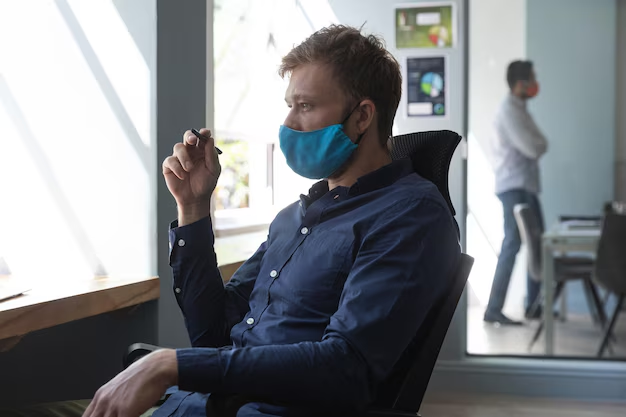Understanding Tuberculosis: What You Need to Know
Imagine a disease that has been around for centuries, challenging scientists and health professionals at every turn, yet remains a significant global health concern today. Tuberculosis (TB) is exactly that—a formidable adversary that requires our attention and understanding. In this comprehensive article, we will delve into the multifaceted world of TB, offering insights into its nature, how it impacts human health, and the continuing efforts to combat it.
What is Tuberculosis?
Tuberculosis is an infectious disease caused by the bacterium Mycobacterium tuberculosis. While TB primarily affects the lungs, it can also impact other parts of the body such as the kidneys, spine, and brain. This versatility makes TB a particularly challenging disease to diagnose and treat. TB is highly infectious; it spreads through the air when a person with active TB coughs, sneezes, or even talks.
How Does Tuberculosis Spread?
TB is an airborne disease, which means it can be inhaled from droplets in the air. These droplets are released when someone with active pulmonary TB coughs, sneezes, or speaks. It's important to note that not everyone who breathes in the bacteria will become sick. TB is classified as either latent or active:
- Latent TB Infection (LTBI): The bacteria remain in the body in an inactive state and cause no symptoms. LTBI is not contagious, but it can turn into active disease.
- Active TB Disease: The bacteria cause symptoms and can be transmitted to others.
The Symptoms of Tuberculosis
Understanding the symptoms of tuberculosis is crucial for early detection and treatment. Typical symptoms include:
- Persistent cough lasting three weeks or longer
- Coughing up blood or sputum
- Chest pain, especially when breathing
- Fatigue and weakness
- Weight loss
- Loss of appetite
- Chills, fever, and night sweats
While these symptoms are common for pulmonary TB, other forms may present differently, depending on the affected organ.
Diagnosing Tuberculosis
Given its potential to remain dormant, accurately diagnosing tuberculosis can be challenging. Healthcare providers may use several methods to diagnose TB:
Mantoux Tuberculin Skin Test (TST): A small amount of tuberculin is injected into the skin to observe a reaction that would indicate TB exposure.
Interferon-Gamma Release Assay (IGRA): A blood test that measures the immune response to TB proteins.
Chest X-rays: Used to identify lung abnormalities indicative of TB.
Microbiological Tests: Sputum tests confirm the presence of M. tuberculosis bacteria.
The Global Impact of Tuberculosis
TB poses a significant public health challenge worldwide, particularly in developing countries with limited access to medical care. According to global health studies, TB is among the top 10 causes of death worldwide and has complex socio-economic implications.
Why is TB a Persistent Global Health Threat?
Several factors contribute to TB's persistence as a health threat:
- Drug Resistance: TB strains have increasingly become resistant to common antibiotics, complicating treatment.
- HIV Co-Infection: People living with HIV are at significantly higher risk of developing TB due to their weakened immune systems.
- Socio-economic Factors: Poverty, malnutrition, and crowded living conditions facilitate the spread of TB.
- Healthcare Access: Inadequate healthcare systems in certain regions hinder prompt diagnosis and treatment.
Treatment and Management of Tuberculosis
Treating tuberculosis requires a rigorous regimen of antibiotics over an extended period. The standard treatment for TB involves a combination of several antibiotics over the course of 6 to 9 months. Medications may include:
- Isoniazid
- Rifampicin
- Ethambutol
- Pyrazinamide
Addressing Drug-Resistant TB
Drug-resistant TB is a particularly concerning issue, requiring alternative treatment strategies. Multidrug-resistant TB (MDR-TB) and extensively drug-resistant TB (XDR-TB) are forms that do not respond to standard treatments. Managing these requires longer, more complicated treatments with second-line medications that can have more severe side effects.
Preventing the Spread of Tuberculosis
Preventative measures play a critical role in curbing the spread of TB. Here are some strategies used globally:
- Vaccination: The Bacille Calmette-Guerin (BCG) vaccine is commonly used in countries with high incidences of TB.
- Infection Control Practices: These practices include isolating infectious patients in well-ventilated rooms and using protective equipment.
- Public Health Initiatives: Education and early detection programs help identify and treat TB in its early stages.
- Targeted Screening and Treatment: Screening high-risk populations and providing preventive therapy for those with latent TB reduces the risk of developing active disease.
The Future of Tuberculosis Control
The fight against TB requires a coordinated global effort, involving research, improved healthcare access, and effective policy-making. Key initiatives that hold promise include:
- Innovative Diagnostics: Research into more rapid and accurate diagnostic tools is ongoing.
- New Medications: Development of new treatment options that are more effective and have fewer side effects.
- Vaccination Improvements: Efforts to develop more effective vaccines that offer longer-lasting protection.
- Global Cooperation: Strengthening international collaboration to share resources and knowledge is vital for reducing TB's burden globally.
Reflecting on the Human Impact
While statistics are an important measure of TB's impact, it's crucial to remember the human stories behind those numbers. Each person affected by TB faces unique challenges that ripple through families and communities. By enhancing our collective knowledge and awareness, we contribute to a culture of global health responsibility and compassion.
Key Takeaways on Tuberculosis 🦠
- TB is a contagious airborne infection primarily affecting the lungs, but it can impact other body parts.
- Symptoms include persistent cough, chest pain, and fatigue.
- TB spreads via airborne droplets, emphasizing the need for proper respiratory hygiene.
- Global health threat due to factors like drug resistance and HIV co-infection.
- Effective treatment involves a combination of antibiotics over several months.
- Prevention through vaccination and public health initiatives is critical.
- Ongoing research is essential for new diagnostics and treatments.
Understanding and awareness are powerful tools in the fight against tuberculosis. By taking proactive measures, supporting innovation, and fostering global partnerships, we move closer to a future where TB is no longer a threat. 🌍
